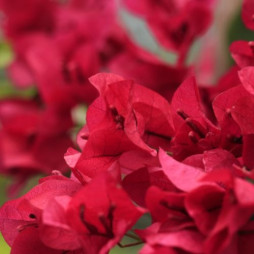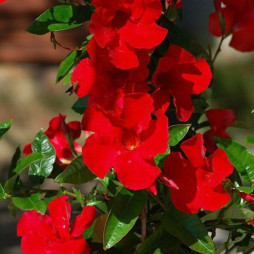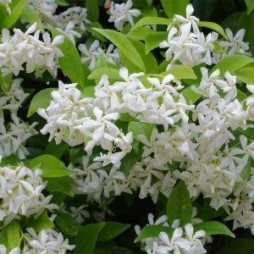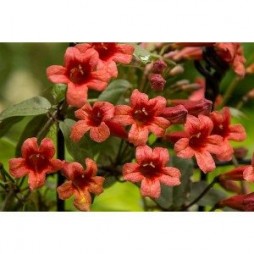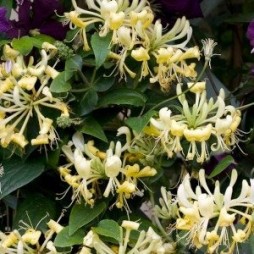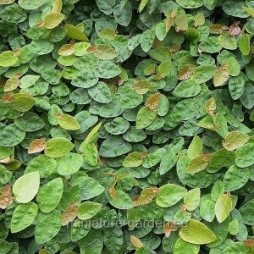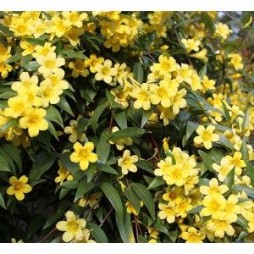Product Catalog
Description
Bougainvillea in the garden or as a hanging basket offers green foliage year round and brilliant color in summer. Their orange, yellow, crimson or purple flowers are actually modified leaves called bracts. The bracts surround the actual flowers that are tiny and white.
They are extremely drought-resistant and thrive in almost any well-draining soil. Once you know the basics, growing a bougainvillea vine is easy. When you plant bougainvillea in the garden, you need to learn the ins and outs of caring for them. Bougainvillea care takes less effort if you select the optimal site. Plant these woody vines in a site with full sun and well-draining soil. Although bougainvillea vines tolerate many types of soil, they prefer loamy soil that contains clay, sand and silt in equal parts. Amend it with organic matter to allow nutrients to easily reach the roots.
Rates
Please contact us for current pricing and availability.
Description
Whether you choose to grow it on a trellis, as a topiary or in a hanging basket, the mandevilla plant has become a common plant for patios and flowerbeds, and rightfully so. The brilliant mandevilla flowers add a tropical flair to any landscape. They need sandy, well-draining soil with plenty of organic material mixed in. A good soil mix for mandevilla plants include two parts peat moss or potting soil to one part builder’s sand.
Rates
Please contact us for current pricing and availability.
Description
Few plants are as well-known for their intoxicating fragrance as confederate jasmine. Confederate jasmine (also called star jasmine) is a beautiful flowering vine that offers sweetly fragrant white flowers in late spring and summer. Its shiny, dark green leaves are a wonderful accent to the blooms and provide good garden interest, even when confederate jasmine is out of bloom. Because confederate jasmine is fast growing, it's an excellent choice for creating privacy, covering a fence, or adding a beautiful backdrop to the garden. . If you have areas where there's nothing to climb, confederate jasmine can also be grown as a lovely weed-smothering ground cover.
Rates
Please contact us for current pricing and availability.
Description
Trumpet vine, occasionally called trumpet flower, is a beautiful native, semi-evergreen, climbing, woody, vine. The name is derived from the shape of the pith in the vine’s stem when viewed in cross-section. The flowers are trumpet shaped, the outside a reddish orange and the throat bright yellow with the blossoms appearing as early as April. Flowering occurs from mid spring to late summer. It is a perennial and in mild climates an evergreen. Trumpet vines are robust and vital and their care includes little more than occasional pruning if you grow these beauties in the best possible location. Ideal cross vine growing conditions include a sunny location with acidic, well-drained soil. It will also grow in partial shade but the flower growth might be diminished.
Rates
Please contact us for current pricing and availability.
Description
Everyone recognizes that lovely fragrance of a honeysuckle plant and the sweet taste of its nectar. Honeysuckles are heat-tolerant and wildly attractive in any garden. A honeysuckle plant is a great addition to any landscape and will draw abundant wildlife with its sweet, yellow to bright-red blossoms. Hummingbirds adore honeysuckle vine, and after growing one you will, too. These easy-care climbers offer attractive clusters of blooms in a wide range of shades. The tube-shape flowers look great mixed in with a variety of shrubs, perennials, and annuals.
Rates
Please contact us for current pricing and availability.
Description
There’s no mistaking the sweet fragrance of wisteria as it perfumes the garden – it’s beautiful violet-blue or lavender blooms cascading from the vine in mid-late spring. With its climbing agility and fast growth habits, wisteria can completely transform a garden in just a few years, becoming a breathtaking shade cover, privacy screen, or focal point. The most important factor to consider when growing wisteria is location. Wisteria has the greatest impact when trained to grow on pergolas, arbors, and other strong overhanging supports so the long flower clusters can hang freely, creating a stunning floral canopy. It can also be trained onto wires mounted on fences or stone walls or draped over garden benches and arched entryways.
Rates
Please contact us for current pricing and availability.
Description
Admirers appreciate this evergreen climber’s rapid growth, which can make it invaluable as a ground cover and a reliable concealer of ugly fences and walls. It is a native of East Asia and is found on Japan’s southern islands, in eastern China, and in Vietnam. Indoors or out it has a special talent for topiary, happily covering tiny or huge wire forms to create living sculptures of animals or geometric shapes.
Rates
Please contact us for current pricing and availability.
Description
Putting on a spectacular display of masses of fragrant yellow flowers in the spring, Carolina Jessamine (also known as yellow jasmine) is perfect for planting on trellises and arbors, along fences or under trees with loose canopies. The glossy leaves stay green all year, providing dense coverage for the supporting structure or can even be used as a ground cover. This is a relatively low maintenance plant, requiring only occasional pruning to remove unwanted growth.
Rates
Please contact us for current pricing and availability.

